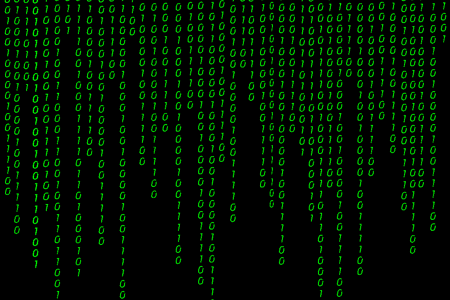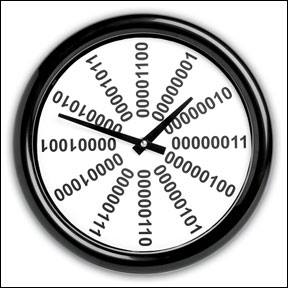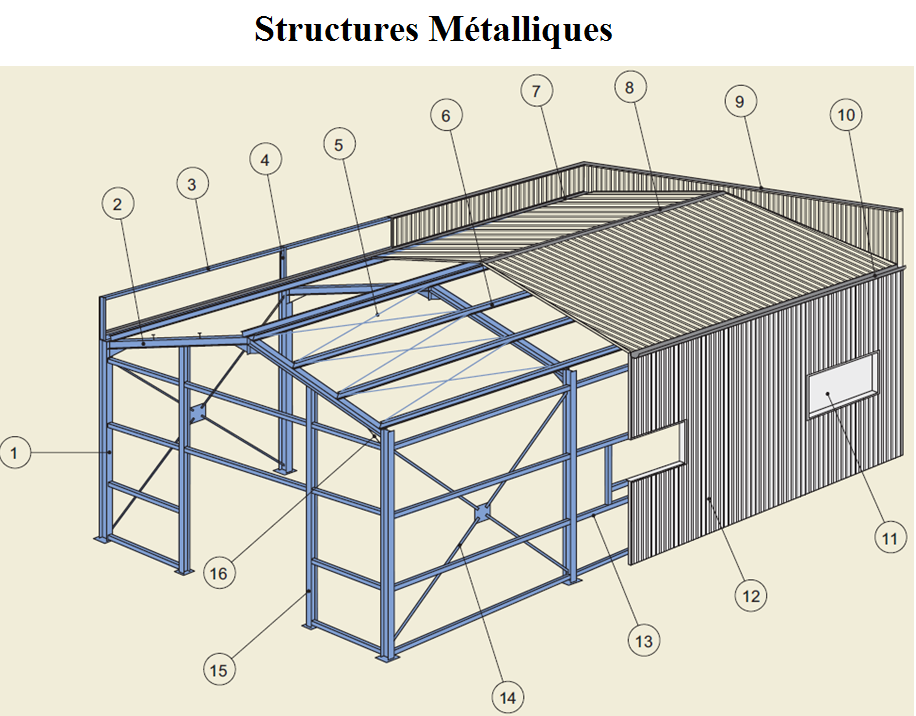E-learning -Université de M'sila
نتائج البحث: 5241

Les bases de l'algébre de boole sont, eux aussi, abordées de façon approfondie.
- معلم: Gestionnaire Moodle
- معلم: Gestionnaire Moodle
- معلم: said amri


- معلم: said amri

Combinational circuits:
- Focus: Combinational circuits are covered extensively in this course. Combinational circuits are digital circuits where the output is solely determined by the current inputs, without any regard for previous inputs or the circuit's state.
- Topics Covered: Boolean algebra, logic gates, multiplexers, decoders, and adders are fundamental components covered in this course. Students learn how to design and analyze circuits that perform specific logical functions without storing any information.
Sequential circuits:
- Focus: Sequential circuits take center stage in this course. Unlike combinational circuits, these circuits incorporate memory elements, allowing them to store information and react based on both current inputs and the circuit's previous state.
- Topics Covered: Flip-flops, registers, counters, and memory units are key components explored in sequential courses. Students delve into the principles of state machines, timing diagrams, and the design of circuits with memory, enabling the creation of more complex and dynamic digital systems.
- معلم: Abdessattar Ghemougui
- معلم: Gestionnaire Moodle
- معلم: Gestionnaire Moodle
- معلم: GUEMACHE Abderezak


 Matter is anything that possesses mass and occupies space. All objects, air, water, oil... are matter; they are bodies. These bodies can exist in different forms called physical states: they can be solid, liquid, or gaseous depending on the degree of cohesion among the molecules that compose them.
Matter is anything that possesses mass and occupies space. All objects, air, water, oil... are matter; they are bodies. These bodies can exist in different forms called physical states: they can be solid, liquid, or gaseous depending on the degree of cohesion among the molecules that compose them.- Dr. Souheyla Chetioui: Souheyla CHETIOUI


CHAPTER 1: FUNDAMENTAL CONCEPTS
This chapter is a general introduction to the structure of matter, which contains basic notions and definitions for the acquisition of basic formalisms in chemistry, particularly within matter describing the atom, atomic mass unit, different types transformations, concentrations and different types of solutions. CHAPTER 2: MAIN CONSTITUENTS OF MATTER
his chapter is devoted to the main constituents of matter (electron, proton and neutron) taking into account the following Experiments: - Crookes experiment and characteristics of cathode radiation.- Experiment of J.J.Thomson: Determination of the ratio |e|/m. - Millikan experiment: Determination of the charge |e| of the electron and deduction of its mass. - Goldstein experiment: demonstration of the positive charge of the nucleus.- Rutherford experiment: demonstration of the proton existing in the nucleus.- Chadwick experiment: demonstration of the neutron existing in the nucleus.CHAPTER 3:RADIOACTIVITY IS NUCLEAR REACTIONS
Chapter 3 deals with natural radioactivity (α, β, and γ radiation), artificial radioactivity and nuclear reactions. This chapter also deals with the energetic and kinetic aspect of radioactive decay with applications in the military, medicine and biological fields.
CHAPTER 4: Bohr model
his chapter presents the classic classical model of the atom (Rutherford model) to know the electronic structure of the atom. This model is modified by Bohr who introduces the notion of quantification. So, this chapter deals more with the Bohr model. CHAPTER 5: MODEL BASED ON WAVE MECHANICS
Inadequacies of the Bohr model, we need a real model that describes the electronic structure of the atom, this is the quantum model. Chapter 5 deals with the quantum (wave) model of the atom. This model based on the Louis De Broglie relation, uncertainty principle, Schrödinger equation, wave functions, atomic orbitals, etc.). CHAPTER 6: Electronic configurations
The chapter is devoted to the Electronic configurations of polyelectronic atoms. The Chapter deals with the filling rules to know the electronic configurations of atoms and their physico-chemical properties.
CHAPTER 7: Periodic classification of chemical elements
The chapter deals with the periodic classification of chemical elements in a periodic table by studying some characteristics concerning the atomic radius, ionization energy, electron affinity and electronegativity.
CHAPTER 8: Chemical bond
The chapter presents the chemical bond model. This chapter covers the following points:Lewis model - Covalent bond - Molecular orbitals - σ bond and П bond - Energy diagram of molecules, bond order - Ionic bond - Partial ionic character - Hybridizations - Geometry of molecules, Gillespie method.- معلم: BOUACHA Samir
Utilisation des méthodes de calcul appropriées à la conception, au dimensionnement et au ferraillage des éléments composants la structure.

Objectifs de l’enseignement:
A l’issu de l’enseignement de cette matière, les connaissances acquises doivent permettre à l’étudiant de dimensionner correctement les éléments de structure d’un ouvrage en charpente métallique.
Connaissances préalables recommandées:
Pour pouvoir suivre cet enseignement, il est nécessaire d’avoir des notions sur : les matériaux utilisés en CM ; les bases de calcul des ossatures en CM ; les classes de résistance des sections transversales ; les résistances de calcul des sections transversales et des éléments ; les assemblages.
Contenu de la matière:
Chapitre 1 : Conception et calcul des assemblages poutre – poteau (3 semaines)
(Assemblage poutre – poteau soudé, Assemblage poutre – poteau par platine d’extrémité boulonnée
Chapitre 2 : Conception et calcul des pieds de poteaux (3 semaines)
(Pieds de poteaux articulés, Pieds de poteaux encastrés)
Chapitre 3 : Conception et calcul des chemins de roulement : (2 semaines)
(Classification des ponts roulants, Actions sur la poutre de roulement, Calcul de la poutre de roulement, Poutres de freinage, Résistance des au voilement par cisaillement, Résistance des âmes aux charges transversales)
Chapitre 4 : Planchers mixtes (3 semaines)
(Conception et calcul de la poutre mixte, Calcul de la connexion)
Chapitre 5 : Ouvrages en charpente métallique (2 semaines)
(Bâtiments industriels en charpente métallique, Bâtiments, multi - étagés en charpente métallique)
Chapitre 6 : Méthodes d’analyse des structures en charpente métallique (2 semaines)
(Classification des structures, Choix de la méthode d’analyse, Prise en compte des imperfections dans le calcul des sollicitations)
Mode d’évaluation:
Contrôle continu: 40% ; Examen: 60%.
Références bibliographiques:
1. J. MOREL : Calcul des Structures Métalliques selon l’EUROCODE 3.
2. P. BOURRIER ; J. BROZZETTI : Construction Métallique et Mixte Acier–Béton – Tomes 1 et 2 – EYROLLES.
3. Document Technique Réglementaire – DTR – BC 2.44 – Règles de Conception et de Calcul des Structures en Acier « CCM97 ».
4. Document Technique Réglementaire – DTR – BC 2-4.10 – Conception et Dimensionnement des Structures Mixtes Acier-Béton.
5. EUROCODE N°3 – Calcul des Structures en Acier – Partie 1-8 : Calcul des assemblages
- معلم: djamel saigaa
Science des défaillances
Déstiné aux étudiants Master 2 Automatique et Systèmes et Maintenance Industrielle
- معلم: mabrouk defdaf

L’objectif du cours est de comprendre le comportement à long terme d’un barrage, il s’agit d’interpréter soigneusement les données d’auscultation mesurées. Le contrôle de la sécurité d’un barrage exige que les données mesurées soient interprétées dans le temps le plus court possible après les lectures. En ce qui concerne les méthodes d’interprétation et d’analyse de telles données, il y a des pratiques et des points de vue variables. Toutefois, dans tous les cas, il est essentiel de disposer de mesures d’auscultation. Les principes de base de l’auscultation des barrages sont exposés, ainsi que les objectifs de l’analyse des mesures.
- معلم: DOUGHA Mostafa
Réalisation pratique de synthèses multi-étages de composés organiques et inorganiques suivie d’une caractérisation spectrale IR, UV, RMN, SM.
- معلم: Azzedine BENYAHIA

- معلم: nourelhouda chalabi
